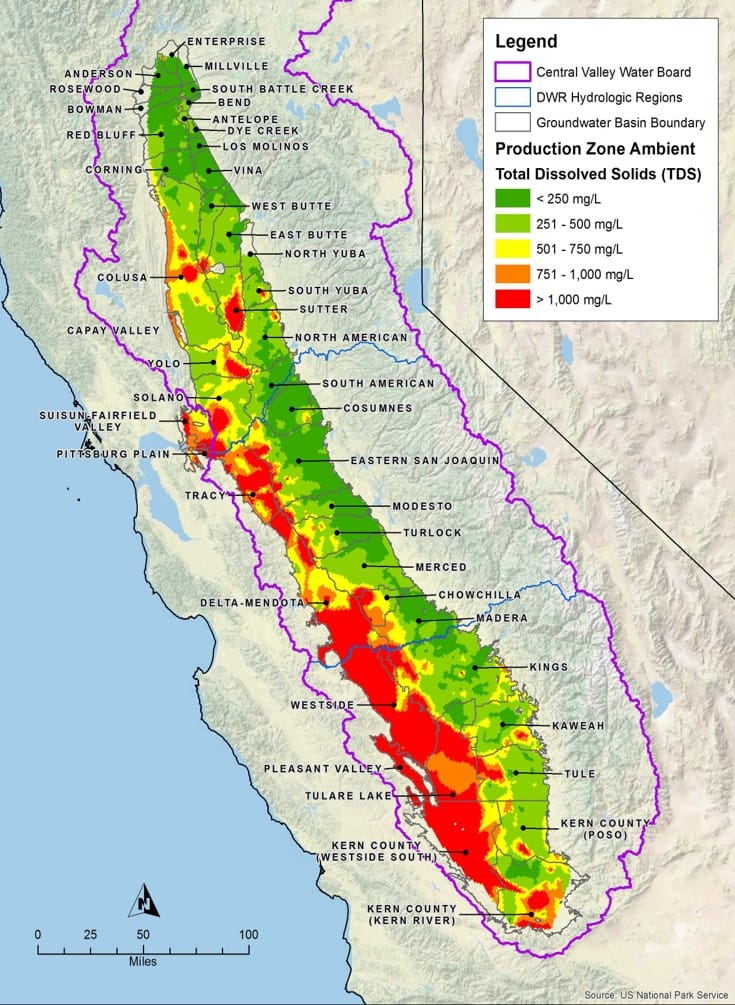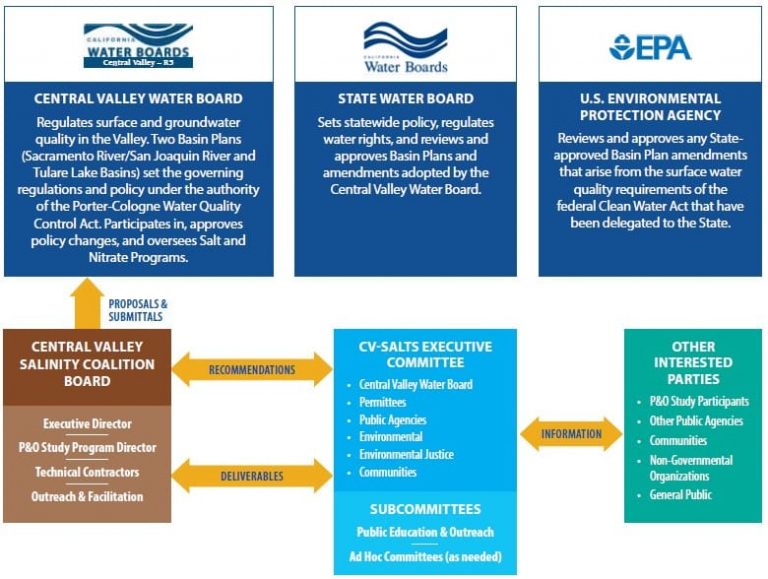
Salt Accumulation: A Long-Term Threat to the Central Valley
The Central Valley (Valley) is the epicenter of California’s economy—encompassing 40% of the land in the state and providing water for people, agriculture, industry, and other businesses from San Francisco to San Diego, as well as food for California, the nation, and the world. Over the last 150 years, increased agricultural, industrial, and municipal activities, coupled with population growth, have resulted in significant increases in salts in soils, groundwater, and surface waters.
Normal activities in all homes, farms, businesses, cities, and towns contribute to the salt problem by adding or concentrating salts. Irrigation, food processing, municipal wastewater treatment and water management practices are just some of the water uses that influence the salt problem in the Central Valley. Salts are also added to or concentrated in parts of the Valley from importing and exporting water supplies.
The CV-SALTS Prioritization and Optimization (P&O) Study is a long-term effort to develop, plan and implement solutions for managing and controlling salt accumulation in the Valley. High levels of salt can impair water quality, reduce crop production, affect drinking water supplies, and alter ecological functions and habitats. Salt accumulations have resulted in approximately 250,000 acres being taken out of production and 1.5 million acres have been declared salinity impaired in the Valley. If not addressed, the future economic impacts of salts on the Valley could exceed $3 billion per year.

